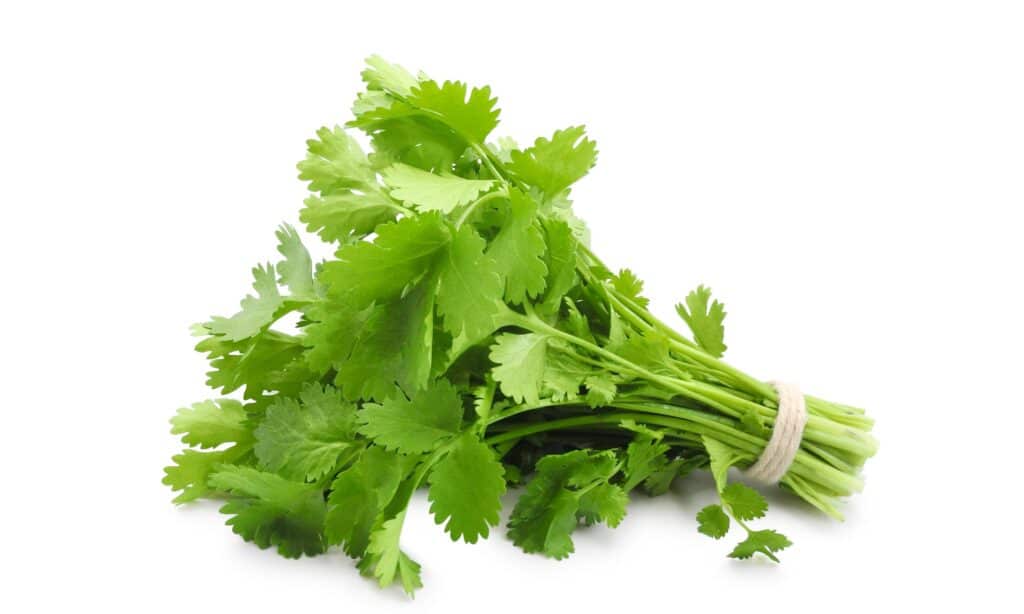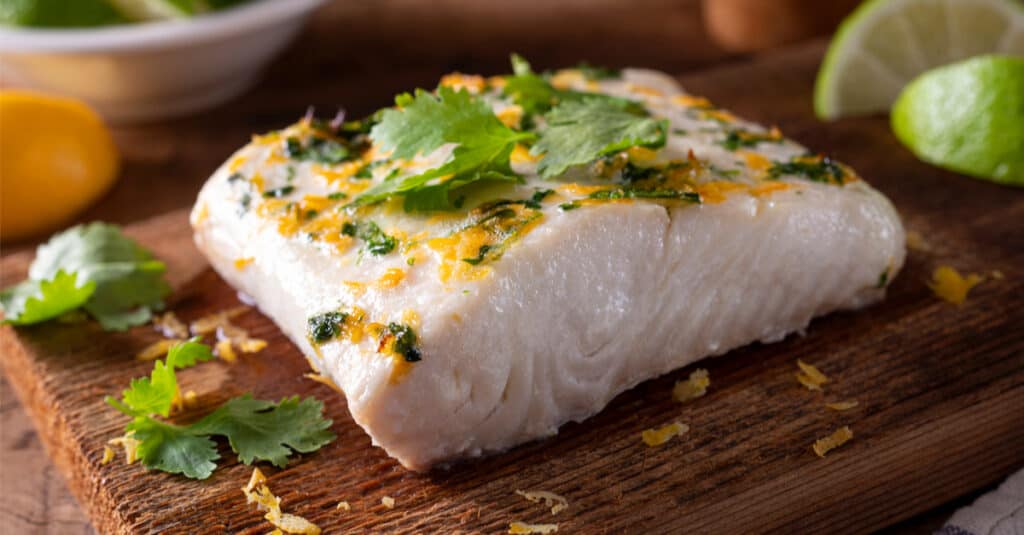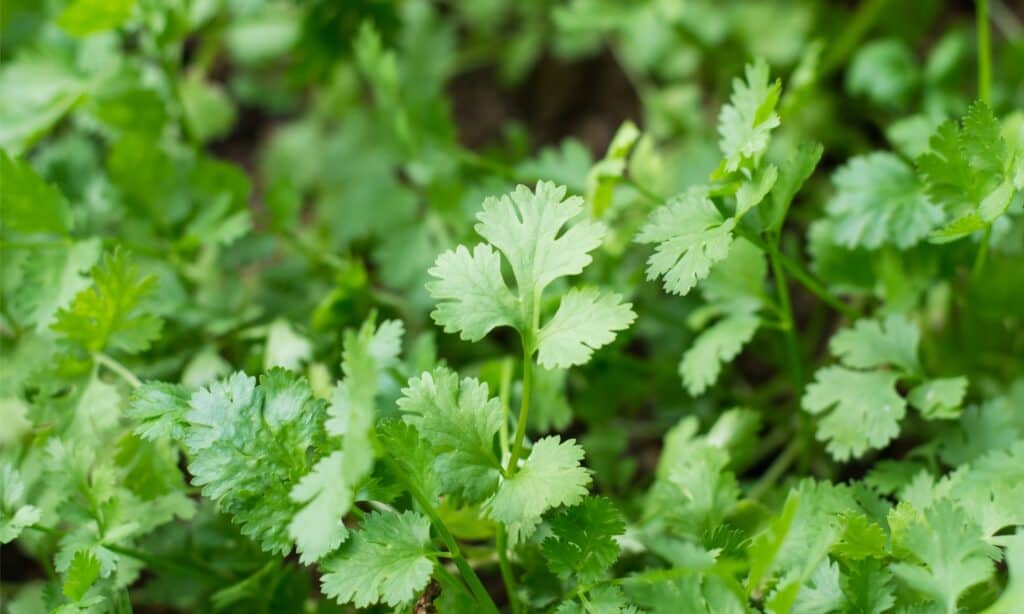Are you wondering what the difference is between Chinese parsley vs. cilantro? What about coriander? You’re not alone, because this is a question lots of people ask. Let’s take a look and find out how Chinese parsley and cilantro differ.
Are Chinese Parsley and Cilantro the Same?
The short answer is yes. Chinese parsley and cilantro are the same plant and its name depends on where you live. More about that later on.
It’s All in the Name: Chinese Parsley, Cilantro or Coriander
Chinese parsley is an annual herb in the Apiaceae family and it has a lot of other names. The most common are cilantro, dhania, and coriander, but what you call it depends on your region.
In the United States, it’s generally called Chinese parsley or cilantro, while in Europe it’s more commonly called coriander. And in India it’s called dhania.
All parts of the herb are used to flavor food, from its leaves to its roots and seeds.
Is Culantro the Same as Cilantro?
No, culantro is the herb eryngium foetidum that’s better known as Mexican cilantro or Ngo Gai. This herb is native to Mexico, South East Asia, and the Caribbean. It has long, thin leaves up to 11 inches long and tastes similar to cilantro but has a more intense flavor.
Where is Cilantro Native To?
Cilantro, otherwise known as Chinese parsley, is native to a large area spanning southwestern Asia to northern Africa and southern Europe.

Cilantro has distinctive flat leaves known for their ragged edges and strong scent.
iStock.com/Yana-Boiko
©iStock.com/Yana Boiko
The Origins of Chinese Parsley
Chinese parsley has a long history alongside humans. It’s recorded in ancient Greek texts and the Egyptian Ebers papyrus dating from 1550BC also mentions it. The European name coriander is taken from the ancient Greek koriannon, which is a bed bug! No one is sure why, but it could be because the scent is similar or it was used as a way to prevent bed bugs.
Cilantro is Spanish for coriander and it’s become the most common name in the States because it’s used in a lot of Mexican cuisine.
And Chinese parsley? That name came about because the foliage is very similar to parsley and it’s used in Chinese cuisine a lot too!
What Does Cilantro Taste Like?
Cilantro is a divisive herb. Some people cannot stand its taste. This is because it contains aldehydes which some people can detect. Unfortunately for them, it makes cilantro taste like dish soap, mold, or dirty socks!
Cilantro roots have a deeper, more intense flavor than the foliage and seeds. Its roots are often used in Asian dishes that are slow cooked.
Is Coriander The Same As Cilantro?
Yes coriander is the same as cilantro. Coriander is its European name and cilantro is the Spanish word for coriander.
Chinese Parsley vs. Cilantro Foliage
Chinese parsley is a soft tender herb with a fleshy stem that reaches around 20 inches tall. It’s leaves are lobed and tend to be thinner and lacier at the tip. Each leaf is flat and ragged at the margin and holds that unmistakable cilantro scent.
The leaves are used in a wide array of food as garnish but also in the staple dish. They don’t cope well with heat, so its often eaten raw in salads or salsa and added to hot dishes at the last moment.
Cilantro vs. Chinese Parsley: Flowers
Not many people have seen coriander flowers, because once it flowers, the leaves lose their taste! In cultivation, cilantro is harvested before it flowers, but in gardens it can be left to bloom. Chinese parsley produces small lacy white flowerheads that are flat and look a lot like carrot and culinary parsley flowers.
If you’re growing cilantro and it flowers, you can let it go to seed and eat those instead! The plant tends to bolt in hot weather so it’s a common occurrence.
Is Chinese Parsley Toxic To Dogs?
No, Chinese parsley (or cilantro) is not toxic to pets. In fact, it has a lot of beneficial nutrients. If you want to give your dog a supplement, choose a specific dog supplement with safe amounts of herbs.
Is Cilantro Annual or Perennial?
Cilantro is an annual herb, which means it germinates, flowers, and dies in one season. However, it’s sometimes mistaken for a perennial because it self seeds everywhere. It’s very good at germinating without much help.
In mild areas Chinese parsley can survive winter, but its flavor is generally gone after a year of growth.
You may think that cilantro would be a perennial in Zones 9-11 as many annual plants are, but because it bolts in dry weather, cilantro is generally not a great plant for hot zones.
Parsley vs. Cilantro: What’s The Difference?
Parsley is a different herb than cilantro, even though its other name Chinese parsley suggests differently. Garden parsley has a milder taste and it tends not to provoke the gag reflex in people that can taste cilantro’s aldehydes.
Parsley and cilantro are cousins in the same family, and aside from its milder taste, parsley differs in other ways. It has thick, curly foliage, whereas cilantro foliage is flat. at has bright green leaves whereas cilantro has dark green leaves.
It also differs because all Chinese parsley parts are commonly used in dishes including foliage, seeds, and roots. In contrast, although you can eat all parts of common parsley, it’s not frequently done.
You may also find that Chinese parsley has an interesting effect on your bladder! It’s common for people to complain of strange-smelling urine after they’ve eaten lots of Chinese parsley!
What Is Chinese Parsley Good For?
So many things! Many people enjoy adding Chinese parsley (aka cilantro) to salads, soups, salsa, curries, paella, sandwiches, pizza, fish, tacos, burritos and so much more. On the other hand, you’ll find plenty of people who say it tastes like feet and it’s only good for the trash can.

Cilantro is an excellent garnish for dishes like halibut or curry.
Foodio/Shutterstock.com
©Foodio/Shutterstock.com
How To Grow Cilantro
Cilantro is an easy herb to raise, but there are two things that Chinese parsley does not like. The first is being moved. It has a long taproot and will often die if you transplant it. Secondly, it will bolt if it dries out, so it needs consistent water. If you’re happy with that, let’s grow.
Sow
Sprinkle seeds onto damp soil or compost in a partially sunny spot, cover lightly, and water. You can start cilantro seeds off in a pot, but if you plan to plant them in the soil, do so early to avoid disturbing the taproot. You’ll see germination in one to three weeks.
Grow
Keep the seedlings damp but not soggy and remove weed competition. Cover them with a cloche if pests like birds are a problem, or if slugs and snails fancy a free lunch, put eggshells, gravel or wool around the seedling. This creates a sharp moat-like structure that molluscs can’t cross.

Cilantro is also known as Chinese parsley and coriander.
iStock.com/Tevarak
©iStock.com/Tevarak
Harvest
You can harvest cilantro as soon as true leaves start to develop. Regular harvesting will encourage more leaves to sprout but don’t strip the stem bare, it needs a few leaves to photosynthesize and create new foliage. You can leave a few plants to flower and seed if you want enjoy their potent flavor, or you can dig up mature plants and cook its roots.
Be sure to keep the ground moist. Given the slightest hint of dry soil Chinese parsley will bolt and lose all its flavor until the seeds ripen.
Which is Best: Chinese Parsley or Cilantro?
This is a trick question because Chinese parsley and cilantro are the same plant. There’s no need to choose between them. You could even call it coriander or dhania if you prefer, they’re all the same thing.
Up Next:
- Is Parsley A Perennial Or Annual?
- What To Plant in September: The Complete Guide
- 11 Vegetables to Plant in October
The photo featured at the top of this post is © iStock.com/Tevarak
Thank you for reading! Have some feedback for us? Contact the AZ Animals editorial team.






